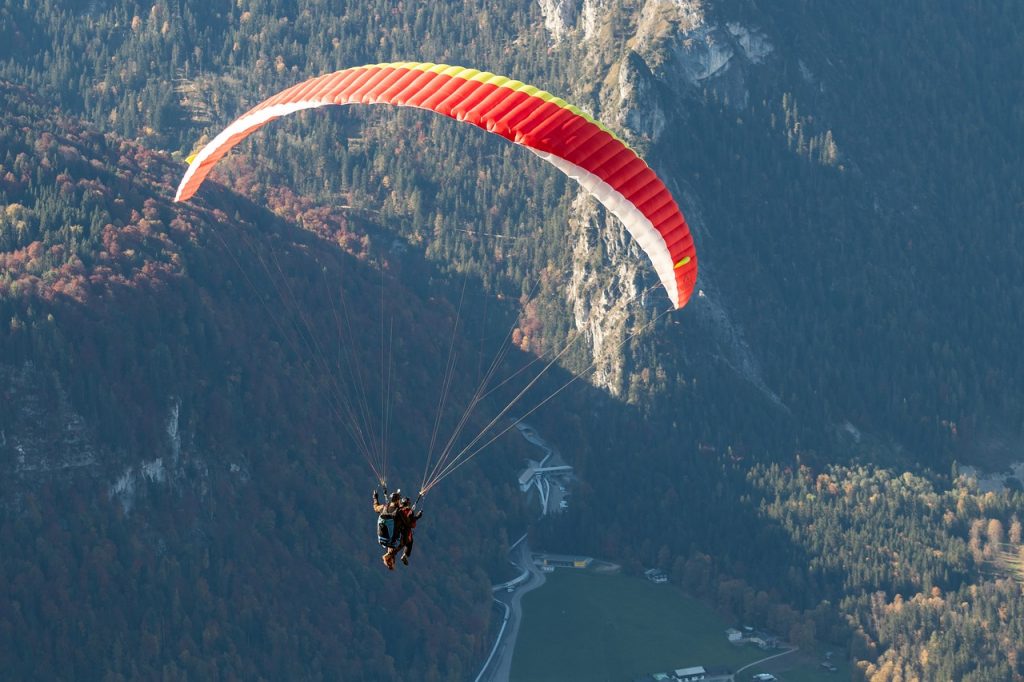Skydiving is an exhilarating experience that requires reliable gear (buy skydiving gear), and one of the most critical pieces is the helmet. It’s not just a piece of protective equipment but an item that can enhance your skydive by improving visibility, providing comfort, and even allowing for communication and recording devices. Here’s what you need to know to choose a skydiving helmet that offers both safety and a comfortable experience on your jumps.
Types of Skydiving Helmets
The first step in choosing a helmet is understanding the different types available. Skydiving helmets generally come in two main styles: open-face and full-face.
– Open-Face Helmets: Open-face helmets are lightweight and often favored by beginners and experienced jumpers who prefer an open view and airflow. They cover the top and back of the head while leaving the face open, making them suitable for warm weather and those who enjoy an unobstructed feel.
– Full-Face Helmets: Full-face helmets offer greater protection as they cover the entire head, including the face. These helmets are popular among professionals and skydivers who want extra coverage from wind and debris. Many full-face helmets come with a built-in visor that reduces glare, making them perfect for sunny or high-altitude jumps.
Both types have their advantages, so it’s worth trying them on to see which suits your preferences and needs.
Comfort and Fit: Key Considerations
Comfort is essential in a skydiving helmet, as discomfort can distract you during a jump. A helmet should fit snugly but not be so tight that it causes headaches. Here’s what to look out for:
– Proper Sizing: Most helmet brands provide sizing charts. Measure the circumference of your head and use this to find the correct size for each brand, as they can vary slightly. A well-fitting helmet will sit comfortably without wobbling or shifting during freefall.
– Padding and Liners: Helmets with soft, removable liners add to comfort, as you can wash or replace them when needed. Some helmets also feature adjustable padding to help achieve the right fit, which can be especially helpful if you plan to wear the helmet over time as liners compress.
– Ventilation: Good ventilation is crucial, particularly for full-face helmets. Look for options with air vents that help maintain airflow, keeping you comfortable at high altitudes and when the temperature rises.
Safety Features
A reliable skydiving helmet should have solid safety features to protect your head without weighing you down. Look for the following:
– Strong Shell Materials: Helmets made from materials like carbon fiber or polycarbonate are lightweight yet sturdy, providing excellent protection without adding unnecessary weight. Carbon fiber is particularly popular in high-end helmets for its combination of strength and lightness.
– Impact Resistance: Check for helmets with impact-resistant technology to better absorb shocks from rough landings or bumps against aircraft parts. Many helmets now meet standards designed to protect against different impact levels, so look for any certifications or safety ratings provided by the manufacturer.
– Visors with UV Protection: If you’re going for a full-face helmet, choose one with a high-quality visor that protects against UV rays and is scratch-resistant. A visor with anti-fogging features is also helpful, as it prevents mist from obstructing your vision.
Added Functionalities for Enhanced Experience
Today’s skydiving helmets come with various features that can improve the skydiving experience. Here are a few optional add-ons to consider:
– Camera Mounts: Many helmets come with pre-installed mounts for action cameras, such as GoPros, so you can record your jumps. If recording is important to you, choose a helmet that allows for secure mounting options to keep your camera steady even during high speeds.
– Communication Systems: Communication is crucial in group jumps or training, so some helmets include headset capabilities or Bluetooth-compatible setups. Full-face helmets are ideal for communication systems as they can integrate with built-in microphones that won’t get disturbed by wind.
– Noise Reduction: Some helmets include noise-reduction technology to help skydivers hear commands or instructions better during a jump, or simply to make the experience quieter. Full-face helmets generally provide better noise reduction, while some open-face models offer ear pads that can be added or removed.
Try Before You Buy
When possible, try on the helmet before making a purchase. Many skydiving centers and specialty stores allow you to test helmets, giving you a chance to check the fit and comfort level. You can also ask experienced jumpers or instructors for their recommendations, as they often know which models hold up best over time and offer the best balance between protection and comfort.
Budget and Quality
Skydiving helmets can vary widely in price, with open-face models often more budget-friendly, while full-face helmets with advanced features may be pricier. Investing in a quality helmet is important; it’s worth paying a bit more for a helmet that provides solid protection and will last over multiple jumps. Keep in mind that well-maintained helmets can be used for years, so finding one that meets your needs and fits well is essential.
Make Every Jump Count with the Right Helmet
Choosing the perfect skydiving helmet is about finding a balance between protection, comfort, and features that enhance your experience. Whether you’re gearing up for your first jump or looking to upgrade your gear, a helmet that fits well and meets safety standards will help you enjoy every moment in the sky. So go out, find the perfect helmet, and get ready to experience the thrill of skydiving with peace of mind.
